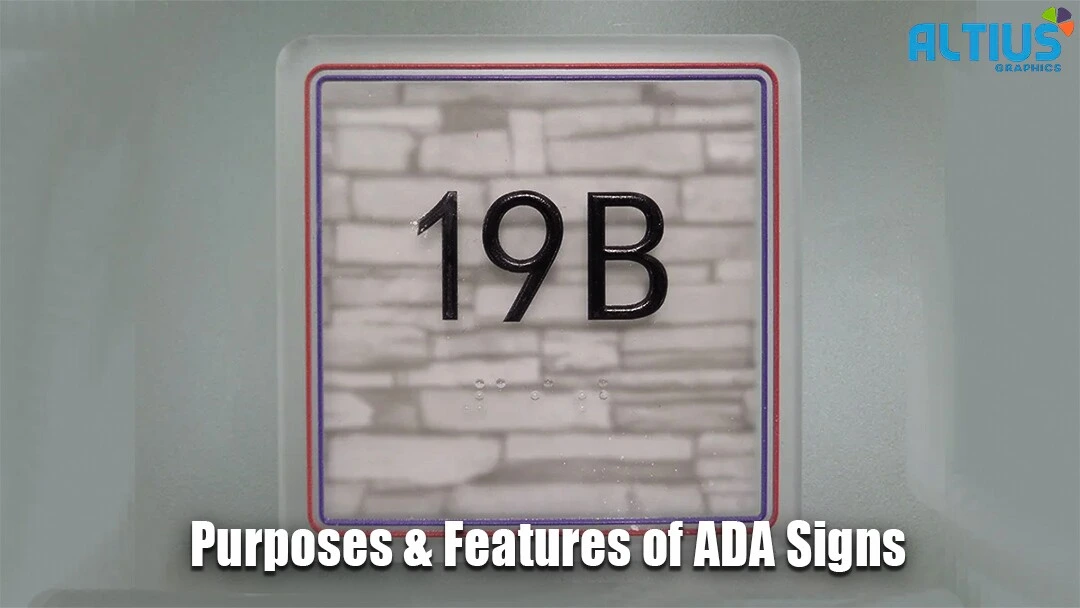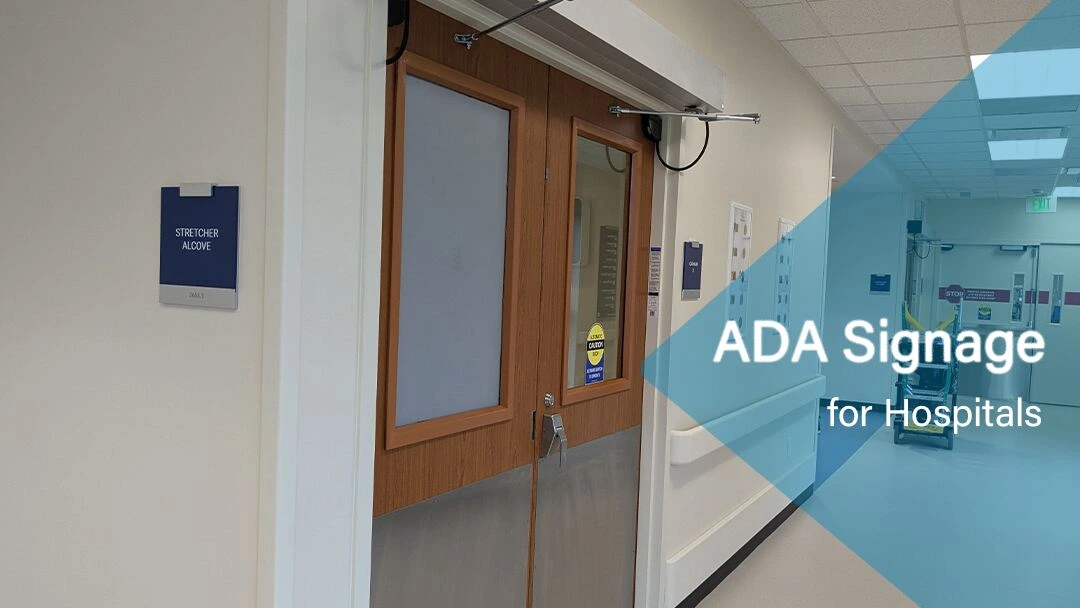What are the purposes of ADA signs?
Three main purposes are served by ADA-compliant signage: Finding internal places that are permanent comes first. Second, ADA signs provide guidance or details about these fixed building areas. Third, the signage highlights accessible elements by utilizing the International Symbol of Accessibility.

What features make a sign ADA compliant?
For those with impaired vision who have trouble processing glare or reflections, a non-glare finish is necessary. All persons may easily read indoor ADA-compliant signage since they are made without a glare surface (such matte or eggshell). A fundamental ADA sign requirement is a non-glare finish.
Signs with a high level of contrast are also beneficial to those who have visual impairments. People with visual loss can read and comprehend the message when the writing stands out against the background. Dark lettering on a white background or vice versa can produce strong contrast.
Anyone can read a typeface that complies with the ADA-compliant font, regardless of their level of handicap. Sans serif fonts are suitable and simple to read, such Futura and Verdana. Italic, script, or heavily ornamental fonts shouldn’t be used on ADA signage since they can irritate those who have vision impairment.
For those who read signs by touch, kerning—or letter spacing—is crucial. The wording on ADA signage must be at least one-eighth of an inch apart. The goal of improving readability is achieved, despite the spacing often being less aesthetically pleasant.
The ADA signage should be mounted properly. The signs should be hung close to the door they represent in a handy location. More specifically, according to ADA regulations, the signage must be placed between 48 and 60 inches above the finished floor.
The latch side of the door should have the ADA signage displayed so that they are easier to see. If signs need to be hung on double doors, do so on the right side. Alternatively, if the door has an inactive leaf, hang the sign in that location.
Pictograms are required on a few ADA signs. The International Symbol of Accessibility, International Symbol of a Public Typewriter (TTY/TTD), Volume Control Telephone, and International Symbol of Access for Hearing Loss are the four pictograms. The wheelchair-wielding individual is represented by the International Symbol of Accessibility.
The International Symbol of Accessibility, for instance, can be seen on signs directing people to restrooms and exits that are wheelchair accessible. In order to lead visitors to an assistive listening system, assembly halls and museums may post signs with the International Symbol of Access for Hearing Loss.
In accordance with federal law, all newly constructed public, commercial, and government structures as well as those undergoing renovation must have ADA-compliant signs.
If ADA signs are not hung where they are required, penalties, including severe fines, may be imposed.
The most reliable company to use when you need ADA-compliant signs is ALTIUS Graphics. Our skilled professionals will guarantee that the signs in your office or commercial property are ADA compliant because they are aware of what is required by local, state, and federal legislation.
The design teams at ALTIUS Graphics are capable of producing ADA-compliant tactile and braille exit signs. In addition to full-service design, we will print and install ADA-compliant parking signs, room labels, stairs signs, and handicap restroom signs.
We’ll also assist you in determining the ADA signs your company has to display in order to comply. Use our experience to design ADA-compliant signs for your entire facility rather than taking the chance of paying hefty fines. All the characteristics that make a business sign ADA-compliant will be incorporated by our designers.



